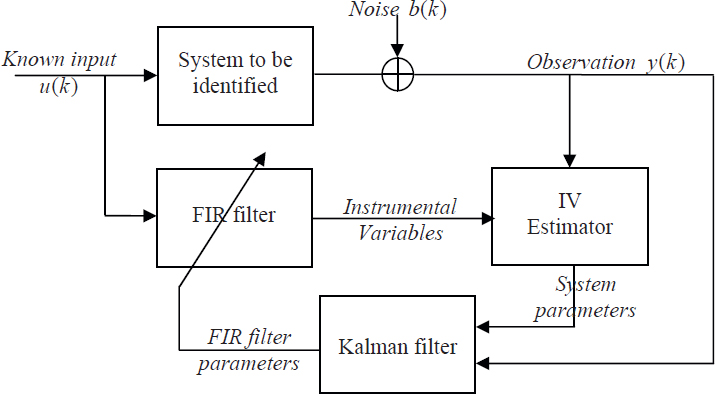Chapter 7
Estimation using the Instrumental Variable Technique
7.1. Introduction
In this chapter, we present the instrumental variable (IV) technique, an alternative to the generalized least squares estimation methods. The IV technique provides consistent estimations from noisy observations. It is based on the use of the system's exogenous variables, i.e. the “instrumental variables”1.
Instrumental variable techniques have been used mainly in control engineering, but historically they were derived early in the 1940s in econometrics [19]. The instrumental variables are obtained by processing the input sequence, which is assumed to be known. For this purpose, we can consider a finite impulse response (FIR) filter whose coefficients can themselves be updated using a Kalman filter. Such an approach, described using a block diagram in Figure 7.1, was proposed by Young [29] for identification in control engineering.

Figure 7.1. Block-level description of the identification method proposed by Young [29] in the field of control engineering
However, in the field of signal processing, we usually do not have prior knowledge of the input sequence and the only data available are the noisy observations. Therefore, the above approach has to be modified. Thus, the method proposed by Friedlander, Stoica and Soderström [12] can be considered. They suggest obtaining the instrumental variables by pre-filtering ...
Get Modeling, Estimation and Optimal Filtration in Signal Processing now with the O’Reilly learning platform.
O’Reilly members experience books, live events, courses curated by job role, and more from O’Reilly and nearly 200 top publishers.

